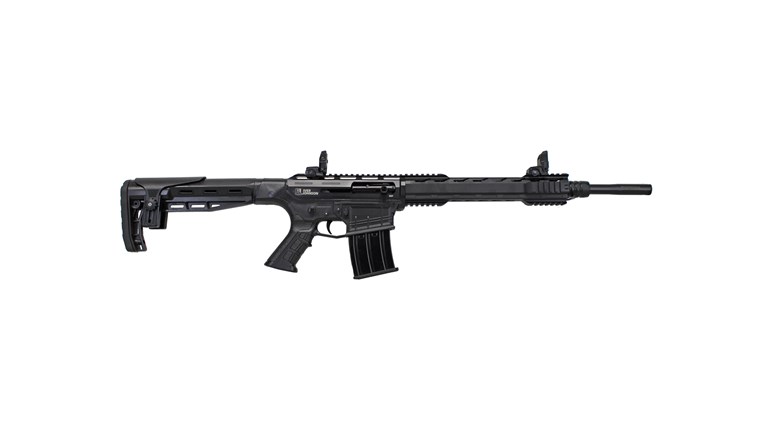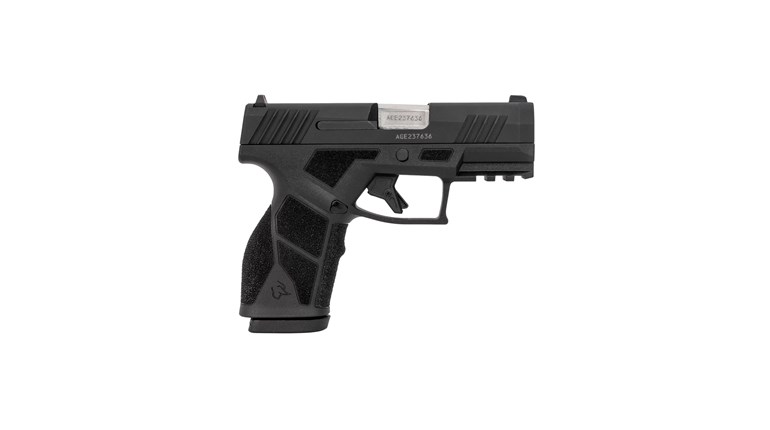
SHOT Show 2016 was quite exciting, as usual. The industry has not disappointed with the new products and, in some cases, updates on previous designs. Windham Weaponry has an excellent reputation for reliability and quality, as well as being able to consistently mass-produce firearms. At SHOT Show, it introduced a new product line, the MCS or Multi Caliber System family of weapons. If you’re familiar with the MGI Hydra, this is a new take on that rifle, which Windham Weaponry entered into a licensing agreement to build in 2015. However, Windham Weaponry made some changes to make the system its own.
The system tested was the RMCS-4 which includes one modular lower receiver, three magazine wells, one MCS upper receiver, four barrels and three magazines. With one lower receiver, the user installs the magazine well to fit the caliber. The standard AR magazine well accepts standard 5.56 NATO magazines (.300 BLK, 6.8 SPC, 6.5 Grendel, etc.). The next—and perhaps the most innovative—was the AK magazine well. This enables the lower receiver to accept standard AK-47 (7.62x39 mm) magazines and uses a standard AR-type magazine-release button rather than the standard lever of an AK-47-pattern rifle. The last is the 9 mm magazine well. This is a Colt-pattern magazine well with one-piece 9 mm well that contains a fixed ejector, feed ramp and modified mag catch.

The upper receiver is very unique in the industry. Unlike other models, the MCS does not require a proprietary barrel for its removable-barrel system. The Hydra uses a standard barrel with a standard barrel extension (minus the delta ring), spring weld and snap ring. The barrel has the gas block installed with the standard carbine-length gas tube pinned in place. The barrel slides into the upper receiver and indexes off of the pin on the receiver extension. Once in place, there are two locking levers that rotate and lock the barrel nut into the upper receiver. Once the two locking arms are in the locked position, a retaining block slides up the Mil-Std-1913 rail covering the locking arms and holding them in place. Then a safety bail snaps in place to hold it in position. The barrels provided with the kit chambered in 5.56 NATO, .300 BLK and 7.62x39 mm have a pinned-on gas block with bayonet lug and Mil-Std-1913 rail on top as well as A2-style flash hider. The 9 mm barrel does not have a gas block and is fitted with a birdcage flash suppressor.
The system comes with three bolt-carrier groups. The standard Mil-Spec carrier is used for 5.56 NATO and .300 BLK. Any Mil-Spec carrier group may be used. The 9 mm bolt is a typical, industry-standard, Colt-pattern variant. Nothing about it has been altered for use in the MCS. The bolt-carrier group for the 7.62x39 mm has several modifications. First, the carrier itself has some material removed from the front, bottom to allow for the clearance of the AK magazine. The firing pin is heavier to allow it to fire hard Russian primers. The bolt is opened up to accept the larger 7.62x39 mm cartridge base and modified extractor. The carrier is marked “7.62” on the left side and the bolt has three ribs on it for identification.

Also included is a Windham Weaponry aluminum GI magazine, Magpul PMag 7.62x39 mm AK magazine and a C-Products Defense 20-round 9 mm magazine. All items are shipped in a Plano Gun Guard carrying case. Fit and finish is first rate, what you would expect from Windham Weaponry.

The first setup tested was the 7.62x39 mm. I was rather excited to try this combo. First, I checked the magazine well for compatibility. All steel and Russian/Chinese Bakelite fit and functioned perfectly along with the PMag polymer magazines. Most of the aftermarket polymer magazines had issues. The latch thickness was inconsistent in the polymer which prevented them from locking, but a quick touch with a file cured the ailment. There were no malfunctions of any sort with any combination of magazines and ammunition. Using AK-style magazines corrects the traditional feeding problems of the AR-type 7.62x39 mm magazine. There were 400 rounds fired, mostly Wolf FMJ, but also Federal American Eagle, Hornady and Winchester.
The barrel, bolt and magazine well were swapped out for 5.56 NATO. There were 200 rounds of ZQI 62-grain ammunition, which did not experience any malfunctions of any sort. Next, the barrel was swapped out with the .300 BLK, which saw 100 rounds of Black Hills Ammunition 125-grain OTM and 60 rounds of Barnes 110-grain TAC-TX fired with no stoppages of any sort. Lastly, the magazine well, barrel and bolt were changed out to 9 mm. A total of 126 rounds of Black Hills Ammunition 115-grain FMJ were tested, which ran hiccup-free. I recommend—for extensive shooting of the 9 mm—the operator switch out the buffer with the heavier 9 mm SMG buffer to protect the receiver from premature wear.

Accuracy testing was done with the 7.62x39 mm barrel. Groups were much larger with this caliber than the rest but, again, this was my favorite configuration. The best group was the Winchester PDX1 Defender, a split-core hollow point. The smallest group was 1.35 inches, with the largest being 1.70 inches. The Hornady and Wolf opened
up significantly more, but still well within acceptance for a military rifle. The PMag was by far the most reliable magazine as well.
This Windham Weaponry MCS is not a rifle for everyone. But, if you are looking for a modular rifle that gives you four chambering options in one, this is it. The configurations are seemingly endless, with standard AR barrels allowing more than a dozen caliber configurations using pistol calibers and .22 LR. The rifle is made to the quality standard for which Windham Weaponry is known.







































